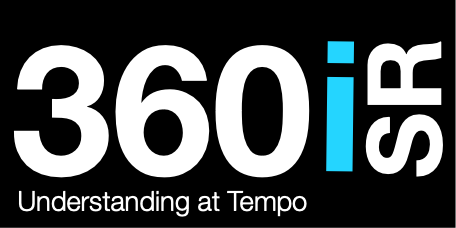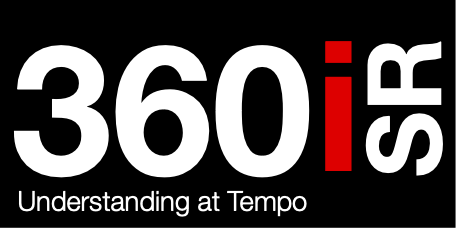You can have any intelligence.... As long as it is black
Embracing Change: The Shift from Product-Centric to Problem-Centric ISR in Modern Warfare
In the intricate world of military Intelligence, Surveillance, and Reconnaissance (ISR), there’s a notable transformation underway. We’re moving from a product-centric model to one that is decidedly problem-centric. This isn’t just a change in procedure, but a philosophical evolution tailored for the dynamism and complexities of modern military operations.
In the traditional product-centric model, the focus was squarely on creating detailed intelligence products from collected data. It was a linear process - collect data, analyse it, and then distribute the resulting products to decision-makers. However, this method often overlooked the specific contexts of decision-making and urgency.
Enter problem-centric operations - an agile methodology that starts with identifying specific operational issues needing resolution. It’s not just about collecting data but ensuring that data is directly relevant to immediate operational needs. This approach fosters continuous engagement between ISR operators and decision-makers.
Here are some benefits of adopting problem-centric operations in high-tempo environments:
- Agility & Responsiveness: These operations are adaptable, making quick adjustments as per evolving operational needs.
- Enhanced Decision-Making: The intelligence provided is directly relevant, supporting informed decisions swiftly.
- Efficient Use of Resources: Focuses on addressing pressing operational questions ensuring optimal use of ISR assets.
- Better Integration with Operations: Ensures alignment between intelligence activities and mission objectives.
- Increased Operational Tempo: Supports faster decision cycles making it difficult for adversaries to predict moves.
So why does this shift matter? Because in today’s fast-paced military environments characterised by rapid changes and complex challenges, being agile isn’t just an advantage – it’s a necessity. Problem-centric operations ensure that ISR aligns closely with commanders’ immediate needs enhancing overall effectiveness.
Revamping NATO’s Traditional Military Structure with a Problem-Centric Approach
In the intricate web of NATO’s military organisation, there lies an opportunity for transformation. The conventional structure, characterised by J1 to J10 divisions, has been efficient but rigid. However, the winds of change are blowing, heralding the integration of a problem-centric methodology that promises agility and enhanced collaboration.
A Closer Look at the J-Code Divisions: The existing structure is comprehensive:
- J1 deals with Personnel and Manpower,
- J2 focuses on Intelligence and Security,
- And so forth until we reach J10 which is dedicated to Cybersecurity in some organisations.
The Shift Towards Problem-Centric Methodology
This new approach doesn’t aim to dismantle the existing structure but seeks to refine how these divisions interact. It’s about fostering an environment where information flows freely and decisions are made swiftly.
Cross-Functional Teams – A New Dawn: Imagine a world where these divisions break free from their silos to form teams centred around specific problems or missions. A blend of expertise from various J-codes ensures comprehensive solutions.
Dynamic Task Forces – Agility at its Best: These are not just teams but highly adaptive forces that morph as per the task at hand. They epitomise flexibility and skill-based assembly.
Centralised Intelligence & Operations Integration: In this reimagined setup, combat ops and ISR divisions revolve around integration centres ensuring seamless flow and utilisation of intelligence.
Decision Support Cells – The Brain Behind Rapid Decisions: These specialised cells are powerhouses of intelligence and operational insights offering commanders actionable options aligned with specific problems.
Technology & Data Integration – The Digital Leap: Every division is interconnected through technology ensuring real-time analysis and collaborative decision-making fortified by advanced cybersecurity measures.
Revaluation of Traditional Roles – Breaking the Mould: It’s not about discarding the old but reshaping it to fit into a world that demands agility over hierarchy.
In this transformative journey, traditional roles like combat ops division, SIDO, SODO, and SADO could be replaced or augmented by cross-functional teams. These teams would embody diversity in skills and knowledge ensuring every aspect from operations to intelligence is covered comprehensively yet flexibly adapting as per evolving needs on ground sero.
Cross-functional teams are ushering in a new era in military operations, particularly when we consider their potential to replace traditional roles within a combat operations division. These roles, namely the Senior Intelligence Duty Officer (SIDO), Senior Operations Duty Officer (SODO), and Senior Air Defence Officer (SADO), have traditionally had distinct responsibilities within their respective domains of intelligence, operations, and air defence. However, the cross-functional team approach blends these domains to enhance agility, decision-making, and operational effectiveness. Let’s delve into how such a team could function in place of these traditional roles:
Team Composition and Structure
A cross-functional team designed to replace the roles of SIDO, SODO, and SADO would comprise experts from each of these domains, as well as other relevant areas such as cyber operations, logistics, and communication. The team would be spearheaded by a coordinator or team leader experienced in multi-domain operations, capable of integrating inputs from various specialties to make informed decisions.
Integration of Intelligence and Operations
In this setup, intelligence officers (formerly under SIDO) collaborate directly with operations personnel (related to SODO) and air defence specialists (SADO’s domain) to provide a comprehensive operational picture. This close integration ensures that intelligence analysis directly informs operational planning and execution, with air defence considerations incorporated from the outset.
Enhanced Decision-Making Process
Operating within a unified framework, the team can make quicker, more informed decisions. The traditional handoff between intelligence (SIDO), operations planning (SODO), and air defence strategy (SADO) can be slow and prone to miscommunication. However, a cross-functional team facilitates real-time data sharing and analysis, enabling rapid adjustment of plans based on the latest intelligence and situational awareness.
Dynamic Tasking and Resource Allocation
In a cross-functional setup, resources and unit tasks can be dynamically adjusted based on an integrated understanding of the operational environment. This means that intelligence assets, operational units, and air defence resources can be coordinated and deployed more effectively, responding directly to evolving threats and opportunities.
Continuous Learning and Adaptation
A cross-functional team inherently promotes a culture of continuous learning and adaptation. Members from different specialties gain exposure to the perspectives and challenges of other domains, fostering a more holistic understanding of military operations. This cross-pollination of ideas can lead to innovative strategies and solutions that might not emerge within the silos of traditional roles.
Implementation Challenges
Replacing traditional roles with a cross-functional team approach is not without challenges. It requires changes in doctrine, training, and culture. Personnel must be trained not only in their areas of expertise but also in working effectively within interdisciplinary teams. Leadership structures may need to be redefined to support a more collaborative decision-making process. Moreover, the success of such teams relies heavily on advanced communication and information-sharing technologies that enable seamless collaboration.
In conclusion, while the roles of SIDO, SODO, and SADO are critical in traditional combat operations structures, a cross-functional team approach can offer significant advantages in terms of agility, responsiveness, and integrated decision-making. Such teams are better suited to the complexities of modern warfare, where threats are multifaceted, and operations must be adapted rapidly to changing conditions on the ground.
In the world of dynamic and complex operational environments, having a well-structured organisation is paramount. Imagine an operations centre bussing with activity, where cross-functional teams are diligently working together, employing a problem-centric approach to tackle challenges head-on. This isn’t just any workspace; it’s a hub of innovation and collaboration designed to be as flexible and dynamic as the problems it seeks to solve.
At the helm of this centre is the Operations Centre Director. This individual is not just a leader but a visionary, steering the ship with strategic direction while ensuring that resources are allocated efficiently. The Director’s eyes are always on the prise - aligning every activity within the centre with broader organisational goals and operational requirements.
Within this bustling ecosystem exists the Operations Integration Cell - think of it as the central nervous system of the operations centre. It ensures that all teams, each equipped with diverse expertise, are focused on priority problems, and moving in unison towards common goals. Coordination between teams, task prioritisation, intelligence integration, and ensuring seamless communication across the centre – these are not just tasks but essential cogs in ensuring that this well-oiled machine operates at peak efficiency.
So there you have it – a glimpse into an organisational structure crafted for agility, responsiveness and above all else – collaboration in solving complex problems.
The Power of Cross-Functional Teams
In the heart of the operations centre, you’ll find a variety of cross-functional teams. Each team is uniquely composed of members from different functional areas, each tailored to tackle specific operational problems or missions. Let’s take a closer look at these teams:
- Intelligence and Surveillance Team: This team is a powerhouse of intelligence analysts, surveillance experts, and data scientists. Their primary focus is on generating actionable intelligence, conducting surveillance, and providing data analysis to support decision-making.
- Operations Planning Team: Comprising operational planners, strategists, and logistics experts, this team is all about developing operational plans, strategies, and logistics support for missions.
- Cyber and Electronic Warfare Team: This team is the operations centre’s shield, with cybersecurity specialists and electronic warfare experts working together to conduct cyber operations, protect communications, and engage in electronic warfare activities.
- Air and Missile Defence Team: This team, made up of air defence specialists and missile defence analysts, is responsible for planning and executing air and missile defence strategies to protect assets and support operations.
- Communications and IT Support Team: Ensuring robust and secure communication channels, managing IT infrastructure, and supporting data sharing across the operations centre are the key responsibilities of this team, which consists of IT professionals and communication specialists.
The Backbone: Support and Logistics Cell
The Support and Logistics Cell is the backbone of the operations centre, providing logistical, administrative, and technical support to the cross-functional teams. They manage supplies, equipment, transportation, and maintenance needs, provide administrative support, and ensure all teams have the resources required to function effectively.
Keeping an Eye on the Ball: Situational Awareness and Decision Support Cell
This cell is dedicated to maintaining real-time situational awareness and providing decision support tools and analytics to the Director and cross-functional teams. They monitor ongoing operations, analyse data from multiple sources, and develop tools and analytics to support decision-making processes.
The Bridge: Liaison and Coordination Unit
The Liaison and Coordination Unit facilitates communication and coordination with external entities, such as other military units, government agencies, and international partners. They ensure the alignment of the operations centre’s activities with broader objectives, share intelligence and information, and coordinate joint operations or initiatives.
Implementing the Structure
Implementing this organisational structure requires careful planning and a clear understanding of the dynamic nature of problem-centric operations. Training and exercises should focus on enhancing teamwork, communication, and the rapid integration of information from diverse sources. Technology plays a critical role in enabling this structure, particularly in terms of data sharing, communication, and real-time analytics.
Flexibility and Scalability
The structure is inherently flexible, allowing for the addition, removal, or modification of teams based on current operational needs and priorities. This adaptability is crucial in responding to evolving threats and operational challenges.
In summary, an operations centre structured around problem-centric methodology and cross-functional teams leverages diverse expertise within a unified framework, enhancing the centre’s ability to address complex and dynamic operational environments. Stay tuned for more insights into the world of operations centres.
Unravelling the Structure of a Cross-Functional Team in a Problem-Centric Methodology
Cross Functional Teams are designed to be highly adaptable, with their composition reflecting the specific requirements of the task or problem at hand. Let’s explore this concept further using a hypothetical dynamic targeting operation as an example.
The Anatomy of a Cross-Functional Team
A CFT is like a well-oiled machine, with each part playing a crucial role:
- Team Leader (TL): The TL is the guiding star of the team, providing overall leadership and direction. They ensure that the team’s efforts align with the operation’s objectives and maintain situational awareness.
- Intelligence Officer (IO): The IO is the team’s eyes and ears. They lead the collection, analysis, and dissemination of intelligence relevant to the team’s mission.
- Operations Planner (OP): The OP is the team’s strategist. They develop and coordinate the execution plans for the operation, integrating intelligence and logistical considerations.
- Cyber Operations Specialist (COS): The COS is the team’s digital warrior. They integrate cyber capabilities into operational planning and execution.
- Logistics and Support Officer (LSO): The LSO is the team’s backbone. They ensure that the team has the necessary resources, materials, and support to execute the mission.
- Communications and IT Technician (CIT): The CIT is the team’s communicator. They maintain secure and effective communication channels and support the team’s information technology needs.
- Situational Awareness Analyst (SAA): The SAA is the team’s radar. They maintain a comprehensive picture of the operational environment and monitor ongoing operations.
- Legal and Compliance Advisor (LCA): The LCA is the team’s ethical compass. They advise the team on legal and ethical considerations, ensuring compliance with rules of engagement and international law.
Functioning as a Cohesive Unit
In a dynamic operation, such as targeting, the team functions through tight integration and continuous communication:
- Pre-Operation: The team gathers and synthesises intelligence, plans the operation, and prepares assets and resources. The legal advisor ensures that the plan complies with all relevant laws and rules of engagement.
- Execution: Real-time intelligence updates are integrated into operational execution. Logistics and IT support ensure seamless execution, while the situational awareness analyst provides updates on any changes in the operational environment.
- Post-Operation: The team conducts a debrief, assessing the operation’s effectiveness, identifying lessons learned, and making recommendations for future operations.
The strength of a CFT lies in its ability to bring together diverse expertise and capabilities, enabling it to respond rapidly and effectively to evolving operational challenges. This structure supports a dynamic, problem-centric approach, ensuring that operations are informed by the latest intelligence, supported by robust logistics and technology, and conducted within legal and ethical boundaries.
In conclusion, a cross-functional team in a problem-centric methodology is a powerful tool in tackling complex operational challenges. Stay tuned for more insights into the world of operations centres!




